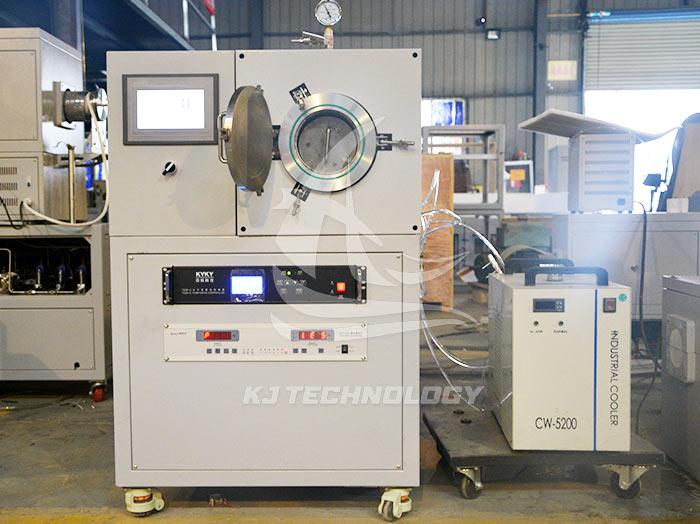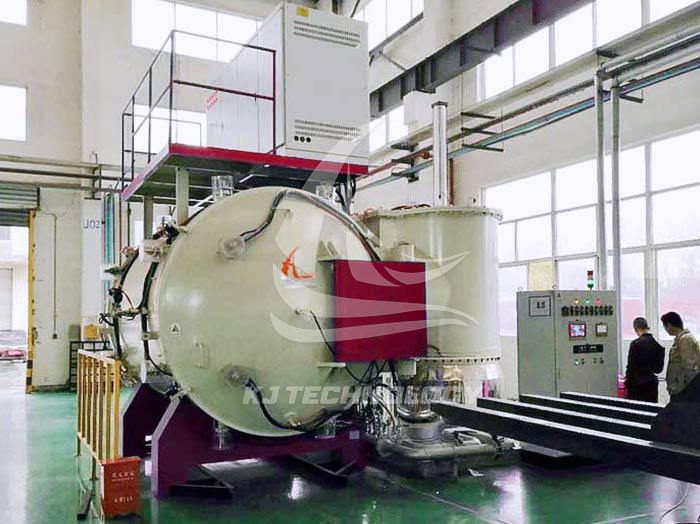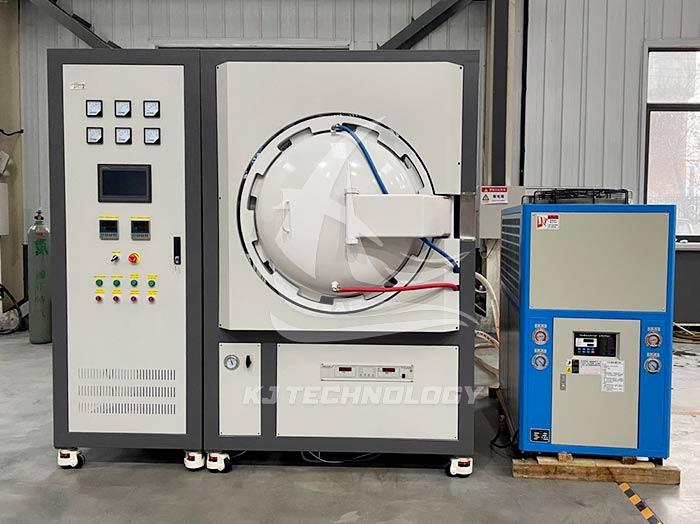Precautions for operating a metal material vacuum sintering furnace
 06-20-2025 Author: KJ technology
06-20-2025 Author: KJ technology
The operation of metal material vacuum sintering furnace involves high temperature, high pressure and vacuum environment, and strict adherence to regulations is required to ensure safety and product quality. The following are key precautions in operation, classified and explained according to the operation process:
1. Preparation before operation
Equipment inspection
Vacuum system: Check whether the vacuum pump, valve, and sealing ring are leaking, and ensure that the maximum vacuum degree meets the standard (such as ≤ 10 ⁻ Pa).
Heating system: Confirm that the heating element (graphite/molybdenum heater) is not broken and the thermocouple calibration is valid.
Cooling system: Check if the water cooling pipes are unobstructed and if the water pressure is ≥ 0.2 MPa to avoid high temperature damage to the equipment.
Safety device: Test whether the over temperature alarm, leakage protection, and gas leakage alarm functions are normal.
Powder pretreatment
Degassing treatment: Pre degassing (200-500 ℃, vacuum or inert atmosphere) of powders that are prone to adsorb gases, such as titanium powder.
Granulation and loading: Fine powder needs to be granulated to improve flowability, and segregation should be avoided during loading. It is recommended to use graphite molds or packaging for fixation.
Process parameter setting
Temperature curve: Set the heating rate (5-10 ℃/min), holding time (1-2 hours), and cooling rate (5-15 ℃/min) according to the material type.
Vacuum degree control: The vacuum degree during the sintering stage should be ≤ 10 ⁻ ² Pa, and inert gas (such as argon) can be filled during the degreasing or reduction stage.
Atmosphere switching: If hydrogen reduction is required, first evacuate to ≤ 10 ⁻¹ Pa, then slowly introduce hydrogen and monitor the concentration (≤ 4% explosion limit).
2. Key controls during operation
Heating and insulation stage
Uniform heating: To avoid abnormal grain growth or cracking caused by local overheating, it is recommended to use segmented heating (such as holding at 50 ℃ for 10 minutes every 50 ℃).
Vacuum degree monitoring: If the vacuum degree suddenly drops, immediately stop heating and check the leakage point.
Pressure control (optional): During pressure sintering, the pressure should be slowly applied (≤ 5 MPa/min) to avoid stress concentration.
cooling stage
Rate control: Rapid cooling may cause thermal stress cracking. It is recommended to cool in sections (such as 5 ℃/min above 1200 ℃ and 10 ℃/min below 1200 ℃).
Atmosphere protection: When cooling highly active metals (such as titanium), vacuum or argon gas should be maintained to prevent oxidation.
exception handling
Overtemperature alarm: Immediately cut off the heating power, start the cooling system, and check for temperature control system faults.
Leakage or fire: Turn off the gas source, start the emergency vacuum pump, and use inert gas to extinguish the fire (such as CO ₂ fire extinguisher).
Power outage emergency: Activate the backup power supply to maintain the cooling water circulation. If it cannot be restored, immediately evacuate and seal the furnace.
3. Post operation maintenance
Equipment cleaning
Cleaning inside the furnace: When the furnace temperature drops below 100 ℃, use a vacuum cleaner or soft brush to remove residual powder and avoid corrosion of the furnace body.
Seal inspection: Replace worn O-rings or metal gaskets to ensure sealing performance next time.
Data recording and analysis
Process parameters: Record the actual temperature, vacuum degree, heating rate, etc., and compare them with the set values to optimize the process.
Product testing: Evaluate sintering quality through density, hardness, metallographic analysis, etc., and adjust subsequent processes.
Regular maintenance
Vacuum pump maintenance: Replace pump oil and clean oil mist separator every 3 months.
Heating element inspection: Check the resistance value every six months, and replace it if the deviation is greater than 10%.
Water cooling system cleaning: Clean the scale every year to ensure cooling efficiency.
4. Safety and Environmental Protection
Personal Protection
Wear insulated gloves and goggles when operating high-temperature equipment to avoid burns.
When handling toxic powders (such as beryllium alloy), it is necessary to operate in a fume hood and wear a gas mask.
Waste Disposal
Waste powder should be treated as hazardous waste to avoid dust explosions or environmental pollution.
The exhaust gas needs to be discharged through filtering devices (such as HEPA filters) to ensure compliance with environmental standards.
Training and Qualification
Operators need to undergo professional training, hold certificates, and be familiar with equipment operation manuals and emergency plans.
5. Summary
The operation of metal material vacuum sintering furnace must strictly follow the principle of "safety first, precise process, and timely maintenance". The sintering quality and equipment lifespan can be significantly improved through the following measures:
Before operation: Conduct a comprehensive inspection of the equipment and powder, and set reasonable process parameters.
During operation: Real time monitoring of temperature, vacuum degree, and cooling rate, and timely handling of abnormalities.
After operation: Thoroughly clean the equipment, record data, and maintain regularly.
For high value-added materials such as hard alloys and titanium alloys, it is recommended to conduct sampling testing on each batch to ensure that the performance meets the standards. Through standardized operating procedures, stable production of sintered parts with a density of ≥ 99% and a hardness deviation of ≤ HRC 2 can be achieved.








